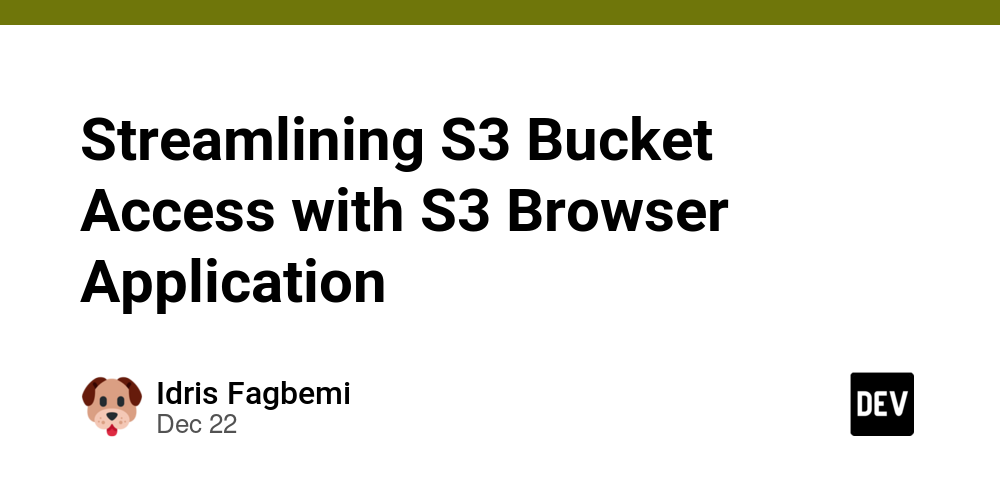problem statement
In many organizations, users who need to access Amazon S3 buckets often face operational delays due to reliance on cloud teams for IAM role creation. While this process ensures security, it can become a bottleneck in the workflow, especially in agile environments where speed and efficiency are critical. Relying on the cloud team to handle these requests adds unnecessary overhead, often leading to consumer frustration and increased workload on the cloud team.
This challenge highlights the need for innovative approaches that can provide secure and flexible access to S3 buckets without compromising governance or compliance standards.
Suggested solution
To solve this problem, I developed a S3 Browser Appa comprehensive solution that enables users to self-manage access to S3 buckets. The application leverages AWS Secure Token Service (STS) to obtain secure, temporary access credentials, eliminating frequent IAM role creation requests. It integrates a centralized management panel for granting, revoking and managing bucket permissions, ensuring access is controlled and traceable.
S3 Browser Application Target
- Reduce dependence: Minimize dependence on the cloud team for daily IAM role creation.
- Increase productivity: Allow users to access resources quickly and efficiently.
- maintain security: Ensure that sound access control mechanisms are in place.
- Simplify management: Provides administrators with an intuitive interface to manage user permissions and track activity.
Key features and functionality
1. User authentication and role-based access control
- Secure login: The application supports a secure login mechanism with password hashing and session management.
- role-based access control: Administrators can assign user roles, such as “Administrator” or “User”, and specific permissions customized to their needs.
- License expires: Administrators can set the expiration date of permissions to ensure that temporary access permissions are automatically revoked when no longer needed.
2.S3 bucket and object management
- bucket browsing: Users can view and search the buckets they allow.
- object access: Within each bucket, users can search for objects and download them securely.
- Refine permissions: Administrators can assign access to specific buckets, ensuring users only have access to what they need.
3. Administrative ability
- User management: Administrators can create new users, manage existing accounts, and revoke access if necessary.
- Audit and reporting: The application provides detailed audit logs of user activity, including login time, permissions granted, and bucket access.
- Permission management: Administrators can add, modify or delete individual user permissions to ensure compliance with organizational policies.
4. Secure AWS integration
- Assume role function: Applications leverage AWS STS to assume a predefined role of accessing S3 buckets. This ensures that access is temporary and secure.
- Environment specific certificates: AWS credentials are managed securely through environment variables and temporary session tokens.
- Regional support: The application is configured to work across multiple AWS Regions, increasing its versatility.
Technical overview
Application architecture
- rear end: The Flask framework powers the backend, handling user authentication, permission management, and AWS integration.
- front end: HTML template designed with Bootstrap provides a responsive and user-friendly interface.
- database: SQLite is used to manage user credentials, permissions and audit logs. This option ensures lightweight and efficient storage.
Deployment and scalability
The S3 browser application is designed for flexibility and can be deployed in a variety of environments, including local servers, cloud platforms, and containerized setups. Docker images are provided for seamless deployment, allowing organizations to scale as needed.
security considerations
- Cross-site request forgery protection: The application includes cross-site request forgery protection for all form submissions.
- Password security: User passwords are hashed using industry standard algorithms before storage.
- Temporary credentials: Use temporary credentials obtained through the Assumption Role API to grant access to AWS, minimizing the risk of credential leakage.
- Separation of roles: Administrator and user functions are strictly separated to prevent unauthorized access.
user workflow
For administrators
-
User created:
- Log in to the admin panel.
- Use the Add User form to create new users, assign permissions, and set access expiration dates.
-
Permission management:
- Review existing user permissions and make any necessary changes.
- Revoke access when the user no longer needs it.
-
Audit log:
- Download activity logs for compliance and security review.
For end users
-
Sign in and access:
- Log in using the credentials provided by your administrator.
- Browse allowed S3 buckets and access files as needed.
-
Search and filter:
- Use the search function to quickly locate specific buckets or objects.
-
Download object:
- Directly download objects via secure, pre-signed URLs.
Benefits of the S3 Browser App
- operational efficiency: Eliminate delays caused by IAM role creation requests.
- User empowerment: Provide users with direct control over their access and reduce dependence.
- Improve security: Implement strong access controls and temporary credentials to ensure data protection.
- Easy to use: Provides user-friendly interface for administrators and end users.
- Cost effective: Reduce the administrative burden on cloud teams so they can focus on more strategic initiatives.
future roadmap
- Integrate with identity providers: Enable SSO integration with platforms such as AWS Cognito or Active Directory.
- Advanced audit capabilities: Includes detailed reports on data access patterns.
- Notification system: Implement alerts to notify users of impending permission expiration.
- Multi-cloud support: Expanded functionality to support other cloud providers, such as Azure and Google Cloud.
- Enhanced security features: Combined data encryption at rest and in transit.
The S3 Browser App is a breakthrough tool designed to solve critical operational challenges in organizations. By enabling users to self-manage access to S3 buckets, it increases productivity, reduces dependence on cloud teams and maintains strict security standards. This innovative solution demonstrates the potential of combining user-centered design with strong technical architecture to effectively solve real-world problems.
